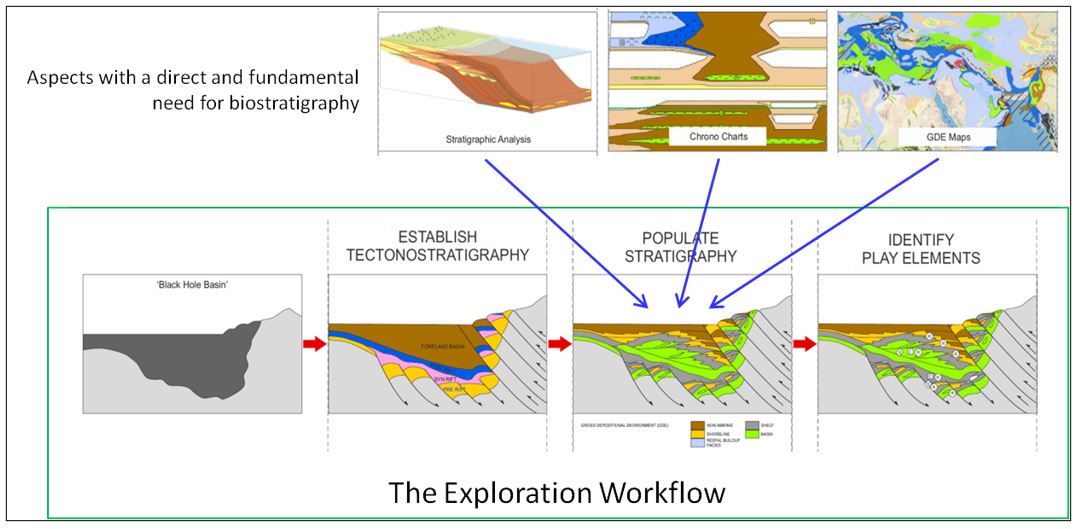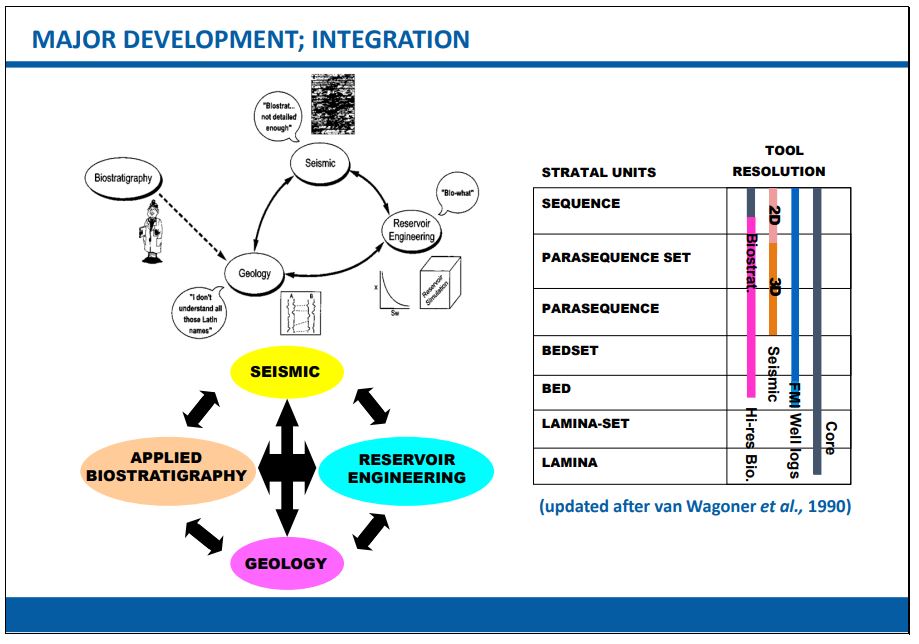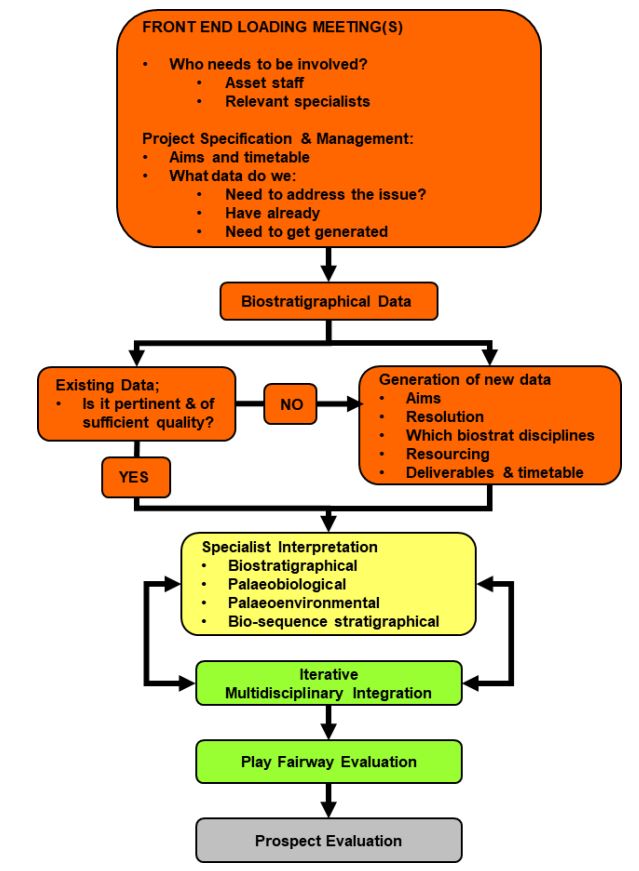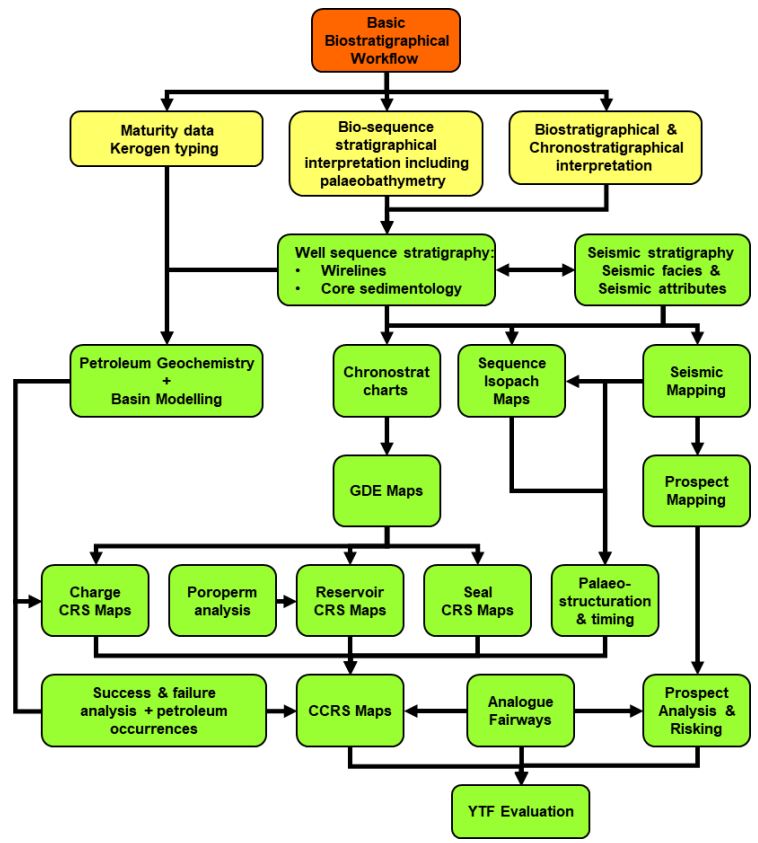Table of Contents
Frontier Exploration
Biostratigraphy and frontier exploration are linked by sequence stratigraphy. Successful play-driven exploration (and production) requires geologists to accurately map reservoir, source and seal facies at the highest resolution possible. In order to do this it is necessary to understand the organisation of the stratigraphic successions you are dealing with at the highest possible resolution. Sequence stratigraphy provides this organisation.
Sequence stratigraphy is a tool which uses changes in sea level to make correlation and prediction of sediments much easier. In basic terms, when sea level is high, seal and source rock facies are likely to be more widespread. When sea level is low, reservoir facies may be deposited in more distal parts of the basin. It can relate to local sea-level or be linked to global sea-level change (eustasy).
One of the benefits of using sequence stratigraphy in this way is its enormous predictive power, enabling us to see inside the “white space” of data paucity or absence. Biostratigraphy and sequence stratigraphy are discussed in more detail later in this manual.
In frontier exploration, biostratigraphy plays a fundamental role in the construction of chronostratigraphic charts, which are based on sequence analysis, and gross depositional environment (GDE) maps. In effect, it populates the stratigraphy of a basin with biostratigraphically well calibrated sequence surfaces, systems tracts and depositional environment polygons.
 The role of biostratigraphy in the Exploration Workflow.
The role of biostratigraphy in the Exploration Workflow.
A major step towards the ability to achieve this came about by properly integrating biostratigraphy into the general geoscience workflow, from its original position “detached” from other geoscientists…

… to a fully integrated component of basin-to-field scale correlation, screening, play-fairway evaluation and prospect generation:


